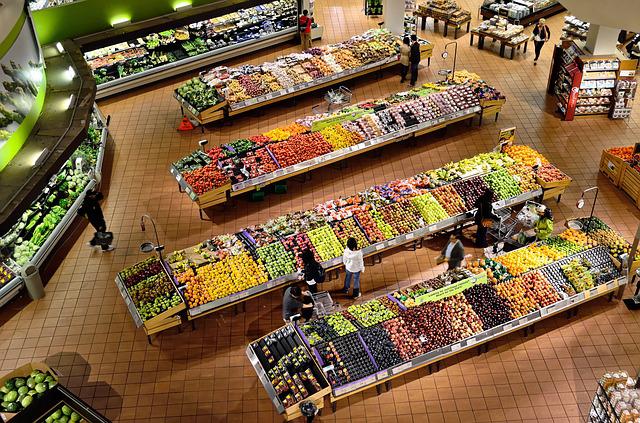
- Global economy forecast to drop to 29% in 2022 from 5.7% last year
- World Bank warns prolonged weak growth, high inflation ups stagflation risk
- 2023-24 growth near 2.9% as Ukraine war disrupts near-term activity, investment and trade, pent-up demand fades, and monetary easing halts
The World Bank slashes its global growth forecast to 2.9% this year from 5.7% in 2021 because of the lingering effects of COVID-19 and Russia’s invasion of Ukraine.
The latest number is significantly lower than the bank’s January forecast of 4.1% in January.
Releasing its “Global Economic Prospects” report on June 7, the bank warned the world is entering a prolonged feeble growth and high inflation that raises the risk of stagflation, when growth slumps and prices keep rising.
The World Bank sees growth near 2.9% in 2023-24 as the Ukraine war disrupts near-term activity, investment and trade; pent-up demand fades, and fiscal and monetary easing halts.
In East Asia and the Pacific, the World Bank expects growth to decelerate to 4.4% in 2022 before rising to 5.2% in 2023. China is forecast to slow to 4.3% this year due to the lingering effects of COVID and weaker global demand. Elsewhere in the region, growth should firm to 4.8% as buoyant domestic demand helps offset weakening exports.
Indonesia is expected to rebound to 5.1% this year on stronger domestic demand and higher commodity prices, and is forecast to reach 5.3% in 2023. Thailand should pick up this year and strengthen to 4.3% in 2023. Growth is projected to be 5.7% in the Philippines on sustained public investment and recovering household consumption, and then moderate to 5.6% in 2023.
Malaysia will rebound to 5.5% as domestic demand firms amid high vaccination rates, then eases to 4.5% in 2023 on fading support from exports and fiscal and monetary tightening. A revival as Vietnam lifts COVID restrictions should lead to 5.8%growth,gaining further to 6.5% in 2023.
The World Bank said downside risks include a lingering pandemic, larger-than-expected spillovers from the war in Ukraine, and financial stress triggered by global financial tightening. Pandemic resurgence and associated restrictions could further reduce China’s growth and dampen recovery in the rest of the region.
Outlook for other regions
- Europe and Central Asia: The regional economy is expected to shrink 2.9% this year before growing 1.5% in 2023.
- Latin America and Caribbean: Growth is projected to slow to 2.5% and 1.9% in 2023.
- Middle East and North Africa: Growth is forecast to accelerate to 5.3% in 2022 before slowing to 3.6% in 2023.
- South Asia: Growth is projected to slow to 6.8% in 2022 and 5.8% in 2023.
- Sub-Saharan Africa: Growth is seeneasing to 3.7% this year and rising to 3.8% in 2023.
Damage from COVID and the war will push per capita income in developing economies this year to nearly 5% below its pre-pandemic trend, the reportsaid.
“The war in Ukraine, lockdowns in China, supply-chain disruptions, and the risk of stagflation are hammering growth. For many countries, recession will be hard to avoid,” said World Bank President David Malpass.
“Markets look forward, so it is urgent to encourage production and avoid trade restrictions. Changes in fiscal, monetary, climate and debt policy are needed to counter capital misallocation and inequality.”
The June report offers the first systematic assessment of how current global economic conditions compare with the stagflation of the 1970s – with a particular emphasis on how stagflation could affect emerging market and developing economies.
The recovery from the stagflation of the 1970s required steep increases in interest rates in major advanced economies, which played a prominent role in triggering a string of financial crises in emerging market and developing economies.
“Developing economies will have to balance the need to ensure fiscal sustainability with the need to mitigate the effects of today’s overlapping crises on their poorest citizens,”saidAyhan Kose,director of the World Bank’s Prospects Group.
“Communicatingmonetary policy decisions clearly, leveraging credible monetary policy frameworks, and protecting central bank independence can effectively anchor inflation expectations and reduce the amount of policy tightening to achieve the desired effects.”
Global inflation is expected to moderate next year but it will likely remain above inflation targets in many economies. The report notes that if inflation remains elevated, a repeat of the resolution of the earlier stagflation episode could translate into a sharp global downturn along with financial crises in some emerging market and developing economies.
The war in Ukraine has led to a surge in prices across a wide range of fuel-related commodities. Higher energy prices will lower real incomes, raise production costs, tighten financial conditions, and constrain macroeconomic policy especially in energy-importing countries, the report said.
Growth in advanced economies is projected to slow from 5.1% in 2021 to 2.6% this year – 1.2 percentage points below forecasts in January. Growth should fall further to 2.2% in 2023, largely reflecting the further unwinding of fiscal and monetary policy support.
Among emerging market and developing economies (EMDEs), growth is also projected to fall from 6.6% in 2021 to 3.4% this year – well below the annual average of 4.8% over 2011-2019. Forecasts for 2022 growth have been revised down in nearly 70% of EMDEs, including most commodity importing countries as well as four-fifths of low-income countries.
The report highlights the need for decisive global and national policy action to avert the worst consequences of the war in Ukraine for the global economy. This will involve global efforts to limit the harm to those affected by the war, to cushion the blow from surging oil and food prices, to speed up debt relief, and to expand vaccinations in low-income countries. It will also involve vigorous supply responses at the national level while keeping global commodity markets functioning well.








